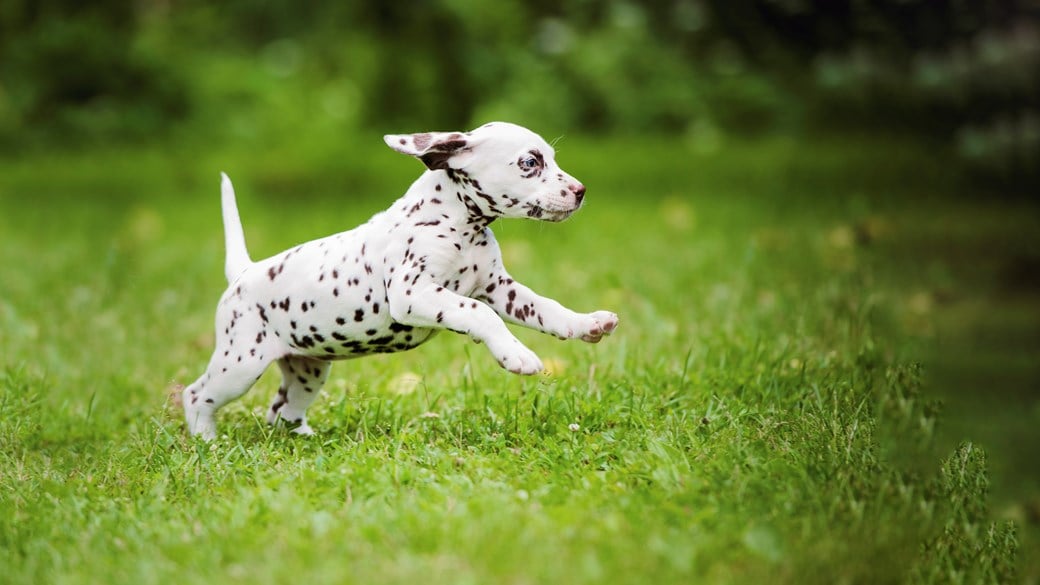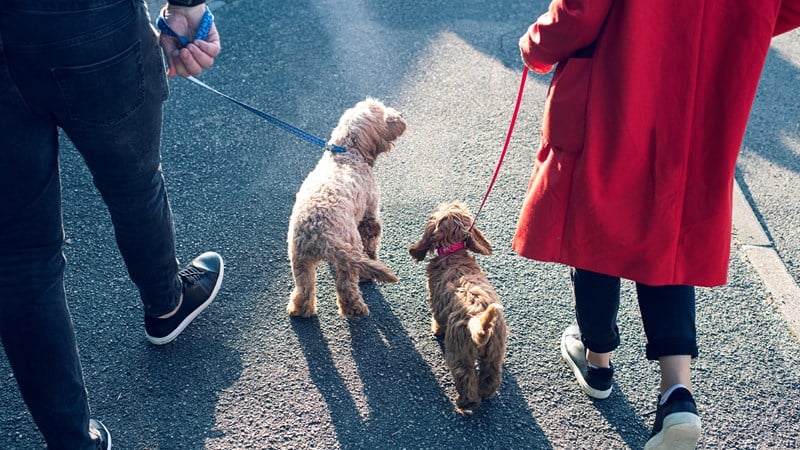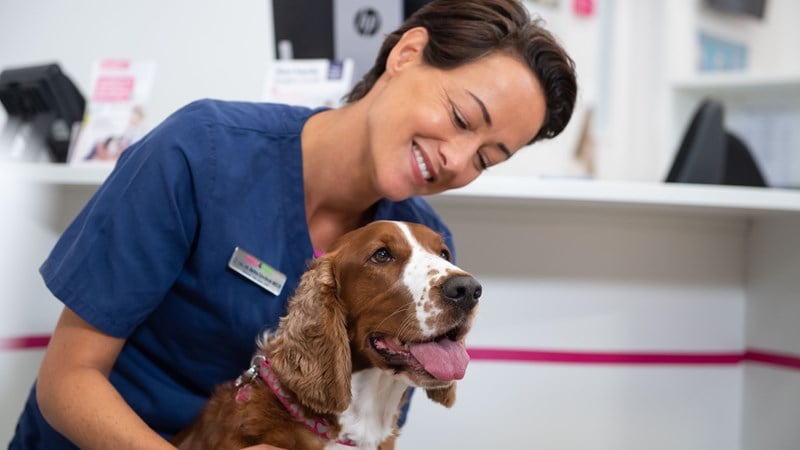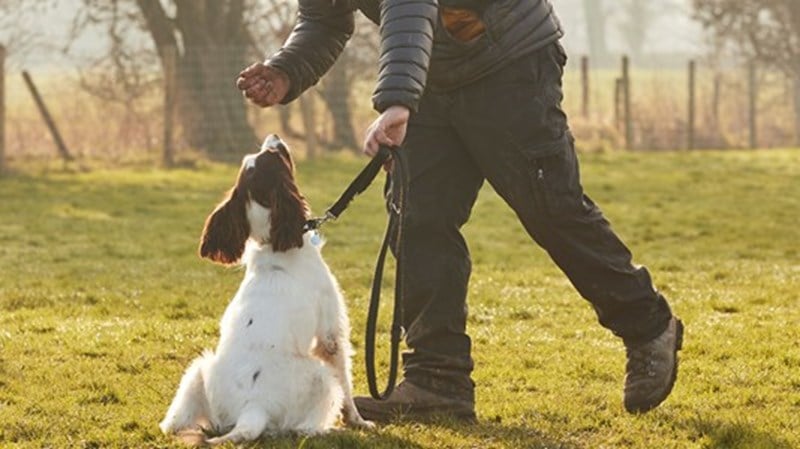
Appropriate Exercise For Your Puppy
Exercise for puppies doesn’t always have to be a walk. High energy play also counts as exercise.
Puppies have a lot of energy! It could be tempting to try to tire them out by running around and playing with them until they’re tired and need a nap, but did you know that you can over-exercise a puppy which isn't good for them.
Puppies grow so quickly! In developing bones and joints, there are special areas called
growth plates, where new bone is laid down. Growth plates stop making new bone, or
‘close’ at set times and become strong bone, but until they do, they are fragile and can be damaged by trauma, such as falls from furniture or hard bumps.
Although structures such as bones, together with muscles, tendons and ligaments (what we often call ‘soft tissue’) need to be trained for their jobs in life through normal movement and physical activity, they also need plenty of time to grow and repair. Too much physical activity and not enough rest-and-repair time can have a detrimental effect on their health and development.
You’ll have noticed that puppies seem to be awake and running around for a little while and then they have to go off to sleep to recharge. As they get older, they spend longer awake and shorter periods asleep. They only play until they’re tired and then they rest.
When we’re playing with puppies, or training them, or perhaps taking them for a walk once they’re old enough, we have to decide on their behalf when it’s time to rest, because puppies like to do things with us and it’s easy to let them overdo it.
Exercise includes the more obvious things such as playing (with humans or with other dogs or pets), training, going for walks, sniffing to find things and swimming.
Some of these forms of exercise are tiring physically, while others are more mentally tiring. It’s important to make sure the time you spend with your puppy is a mix of both physical and mental exercise and also not to wait until your puppy looks tired before you stop
There are lots of views on this because puppies have been brought up with all sorts of
approaches to exercise and have grown up healthy and sound. However, the more we
understand dog health and physiology and as more evidence is uncovered by
research, some general advice becomes easier to offer.
As a rule, where physical exercise is concerned, other than free play with toys or with other pets, the average puppy who is still growing could do about five minutes for every month of their age, once or twice a day. For example, a puppy of five months old can do 25 minutes of exercise up to twice a day. There is some individual variation in this – not all puppies will need or manage this much physical activity, while others may have recharged and be ready for more fun so quickly that they will create their own mischief if they don’t get an extra session of play or another little walk.
Overwalking a puppy
If your puppy sits or lies down during a walk or wanders off during playtime and looks as though they want to take some time out, give them a rest.
If you’re out on a walk, you could carry them or you could give them time to recover some energy and finish the walk, but perhaps reduce the length of walks for the
next week or so. If you find your puppy seems to lack energy or to get tired very quickly, it might be worth having a chat with your vet team, just to make sure there’s no underlying reason.
Some breeds of dogs reach physical maturity sooner than others. In general, the larger the breed, the longer it will take for their bones and joints to be fully developed. If you have a large-breed puppy, err on the side of caution as you increase their exercise. You might like to break up exercise periods into smaller chunks to allow your puppy to rest more frequently.
Find out about your puppy’s breed and if you aren’t sure at what age they are
considered fully grown, or how much exercise is right for them, check with your vet team.
Breeds who have been designed to work, such as collies, spaniels and terriers, are normally very energetic. If you were to try to tire them out using physical exercise alone, you might risk overdoing things. Instead, make sure they can play freely in the garden, or do some calm training with them. Look into games involving searching for things using their nose, or toys that require them to focus or use up some energy by chewing. These activities can tire them out without risking their health.
Brachycephalic, or flat-faced puppies, may want to play and take part in activities just like anyone else, but often, they can’t manage as much physical exercise because it can be difficult for them to breathe properly. Keep a close eye on how they’re coping, focus on less physically demanding activities and check with your vet if you are worried about their energy levels or if you can hear loud noises from their nose or mouth when they’re playing or resting.
It’s not a good idea to exercise any puppy in hot or humid weather, but this is
particularly important with brachycephalic breeds, who can’t cool themselves easily.
Small breeds of dogs grow faster than larger breeds, so they’ll reach physical maturity earlier. This means that they should be able to cope with some activities sooner than larger breeds. Remember though that, although small breeds are often full of energy, they do only have little legs, so taking them for a walk requires a lot of effort on their part in order to keep up! Keep walks reasonably short and steady so your small-breed puppy can go at its own pace.
Lots of energetic breeds will settle nicely after mental exercise, so find games for them that aren’t physically tiring, but that gets them thinking. Puzzle games and activities that involve using their nose to find things are great for busy dogs. Some breeds are ‘mouthier’ than others and get a lot of pleasure from settling down with something to chew, so provide your puppy with safe toys that they can have a good chomp on.
Getting to know your own puppy, adapting the ‘five minutes per month of age’ rule to suit them and making use of different sorts of exercise and activities should help to give your puppy a great start in life!
Read why some activities could be riskier than others
There have been studies looking into whether letting puppies go up and downstairs could be associated with joint problems. It’s difficult to compare groups of puppies who are and are not allowed to use stairs, because so many other factors also differ, including genetics (even within the same breed), nutrition and exercise.
However, it is sensible to put a stair gate at the top and bottom of the stairs and to carry your puppy up and down them, if you can do this without risk of dropping them or falling with them, supervise them using a harness and lead, or simply not to take them up and down until they’re well-grown, strong and coordinated.
Puppies under three months of age shouldn’t be attempting stairs.
High-speed turning and stopping isn’t great for any dog’s joints, but especially not for
growing puppy joints. Try to find other games to play until your puppy is fully grown.
Even then, it’s much better for dogs who like to chase and retrieve toys, to teach them to wait until you’ve thrown the toy and it’s stopped moving, before you let them run out to get it.
Take a look at a selection of dog toys here.
Lots of people enjoy taking their dogs with them when they’re running or off-road cycling. Dogs need to be fully grown and fit before they can do sustained exercise like this.
Your vet team can check your dog over and advise you whether they’re ready to start this kind of activity. On that note, puppies have soft paws and it will take time for their pads to toughen up. Be sure to keep an eye on them to make sure they aren’t getting sore, and vary the surfaces on which you exercise your puppy.
It’s great to teach puppies about balance and coordination in a controlled manner while
they’re still relatively young, and some trainers offer this sort of activity. However, puppies can’t undertake the physical activities involved in dog agility or flyball, such as jumping, climbing or hitting a box until they’re fully grown.
A fall from an obstacle, or repeated jumping or tight turns could lead to injuries. What is good for them, however, is to learn about different ground surfaces. Taking them out for walks over undulating ground, sand, gravel or snow, through woodland and puddles and over things like footbridges, is good for developing balance and coordination.
Always keep puppies on a lead in unfamiliar places and near roads and water, when you’re out adventuring with them.
Join our free VIP Puppy club
Join the club for expert advice and tailored offers, including £30 off our Complete Care Health Plans

Health Plans to keep your puppy healthy
At Vets4Pets we offer a range of Health Plans that make essential routine treatments more affordable. You'll save money on things like annual vaccinations, flea and worm treatment and routine health check-ups.

Looking for more advice?

Puppy & Kitten Advice
Giving your pet the best start in life begins with getting the best expert advice.
